The Japanese Versions of Hawaii Snacks
Hawaii and Japan are tied culturally due to the mass immigration of Japanese pre-World War II. It’s still close today. For Japanese, Hawaii is considered a top travel destination and many locals in Hawaii also enjoy visiting Japan.
It should be of no surprise that some foods and snacks have ties to Japan as well. Here are a few.
Tomoe Ame (Bontan Ame)
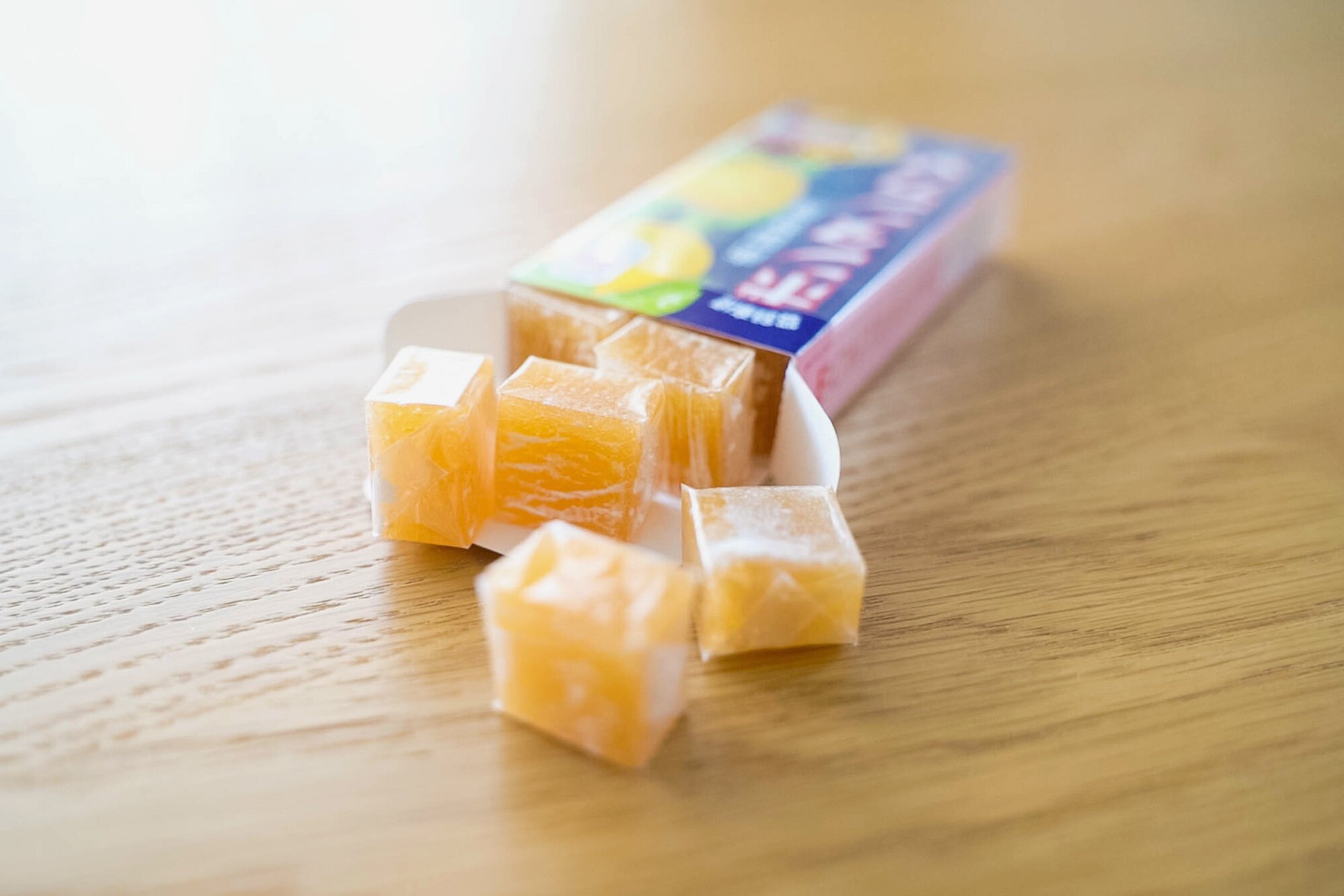
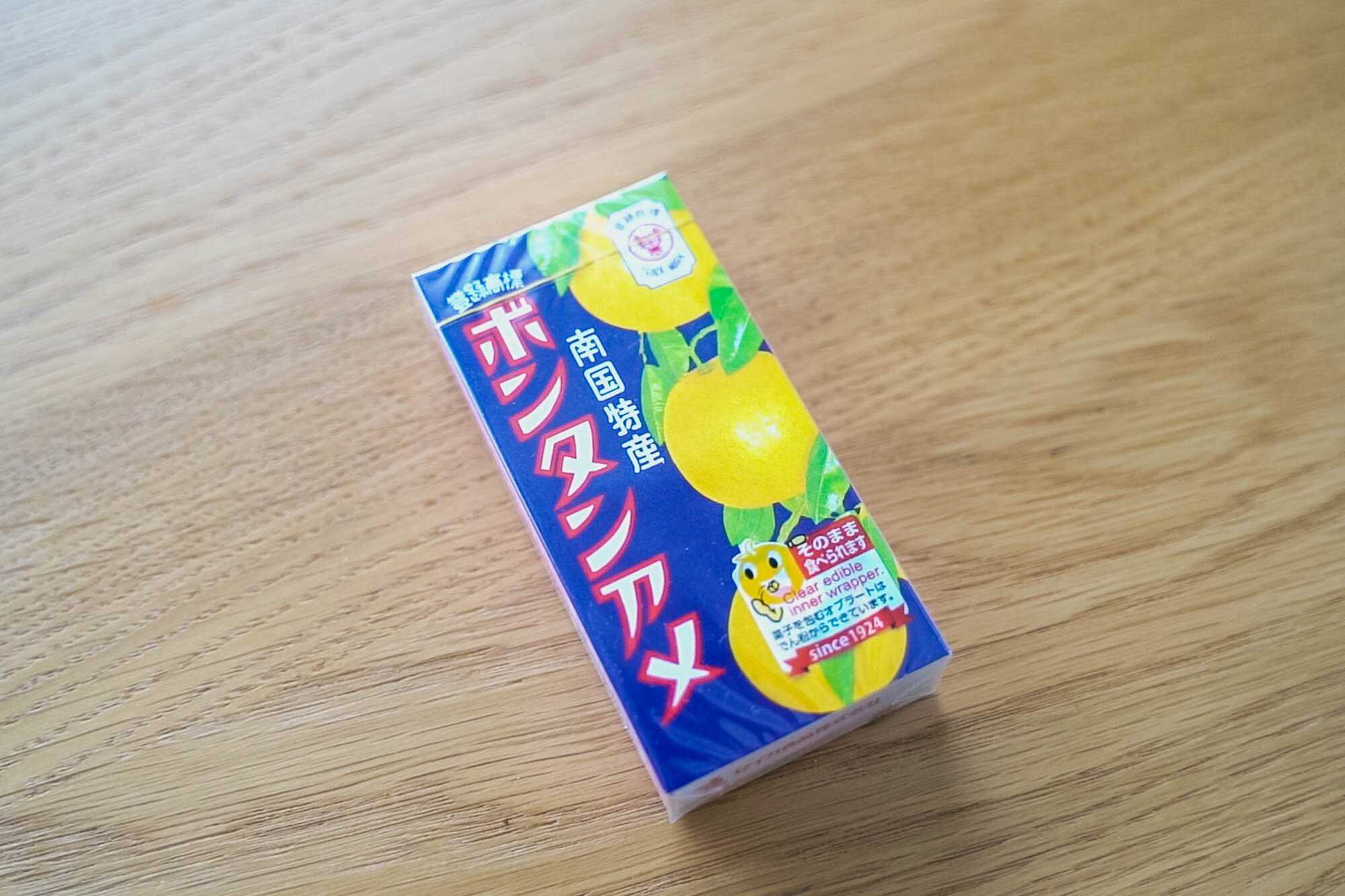
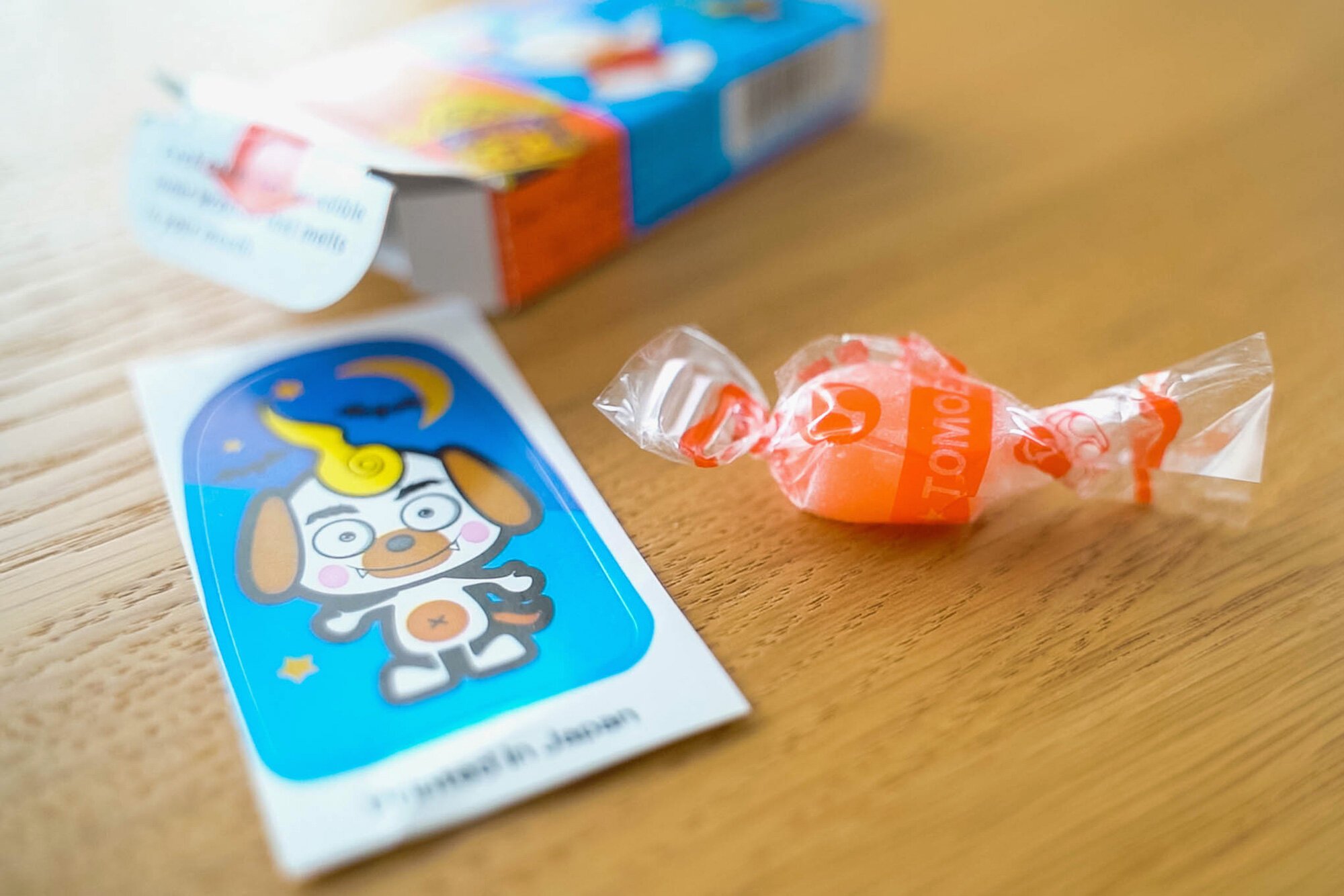
Tomoe Ame is a brand of “bontan ame” is a candy found in crack seed and drug stores in Hawaii. They may appear in Japanese shops on the US mainland as well.
It’s soft, chewy, slightly fruity candy wrapped in rice paper. It’s fun for kids because they put a sticker inside the box. It’s made in Nagoya, Japan and is imported but I haven’t seen the brand or box being sold in Japan.
In Japan, it’s more commonly known simply as Bontan Ame, and tastes almost exactly the same as the one in Hawaii.
It originated in Kagoshima and was derived from a mochi-like snack from nearby Kumamoto. The candy was created by adding bontan, or a Pomelo citrus fruit.
Found at: Daiso
Price: ~100 JPY (1 box)
https://www.seikafoods.jp [J]
Butter mochi
Butter mochi is actually a local, Hawaii snack and was not imported from Japan. However, it does use Japanese ingredients and it’s reasonable to say that there’s at least some influence.
Japanese butter mochi is very different. While the Hawaii version is a dense, caky, dessert treat, butter mochi in Japan resembles typical mochi more.
Butter mochi in Japan originated in Akita, and is a simple, delicious, butter-flavored soft mochi snack.
Found at: Supermarkets
Price: ~180 JPY (1 pc)
Hawaii version recipe: https://kirbiecravings.com
Chi chi dango
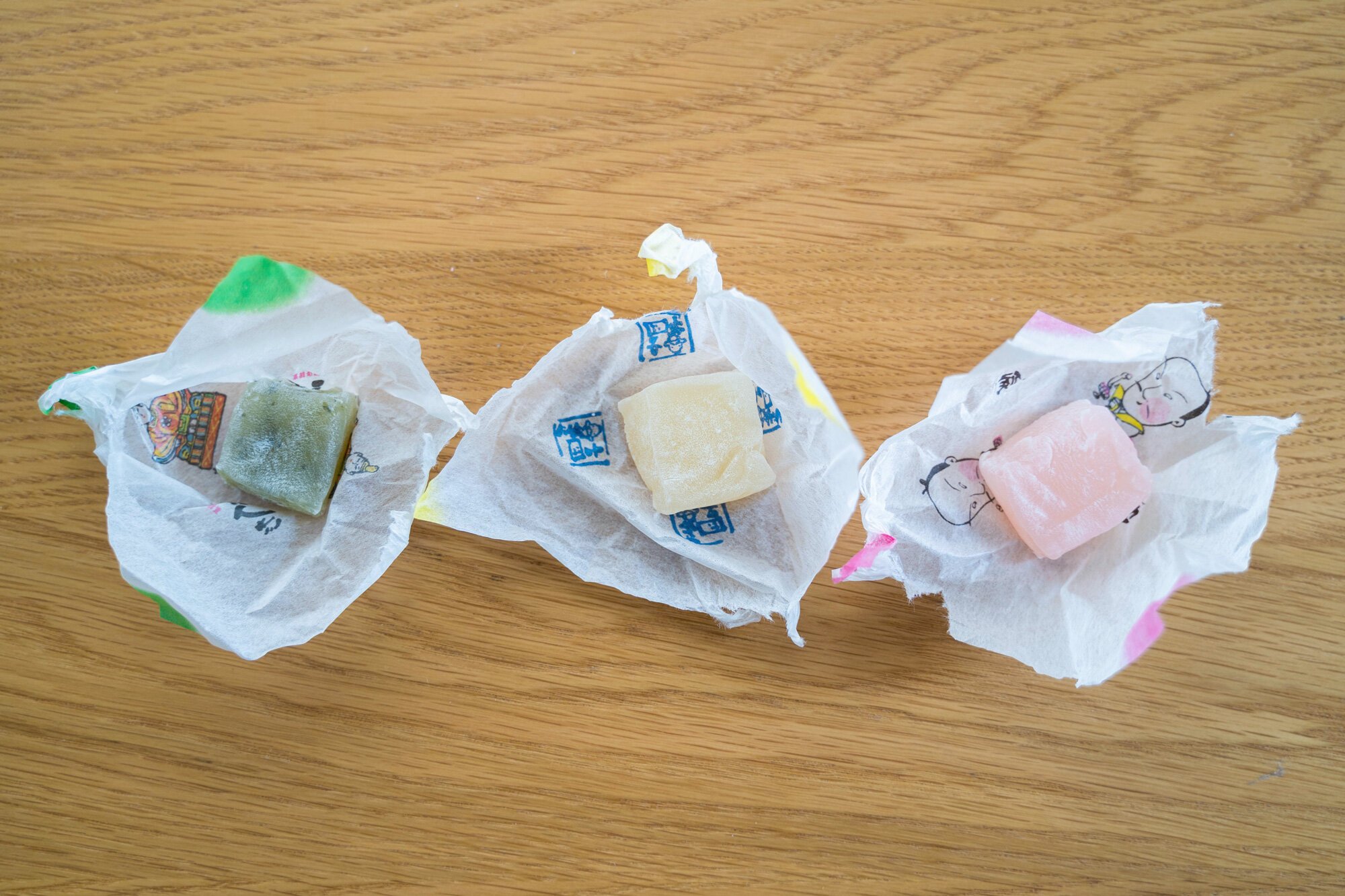
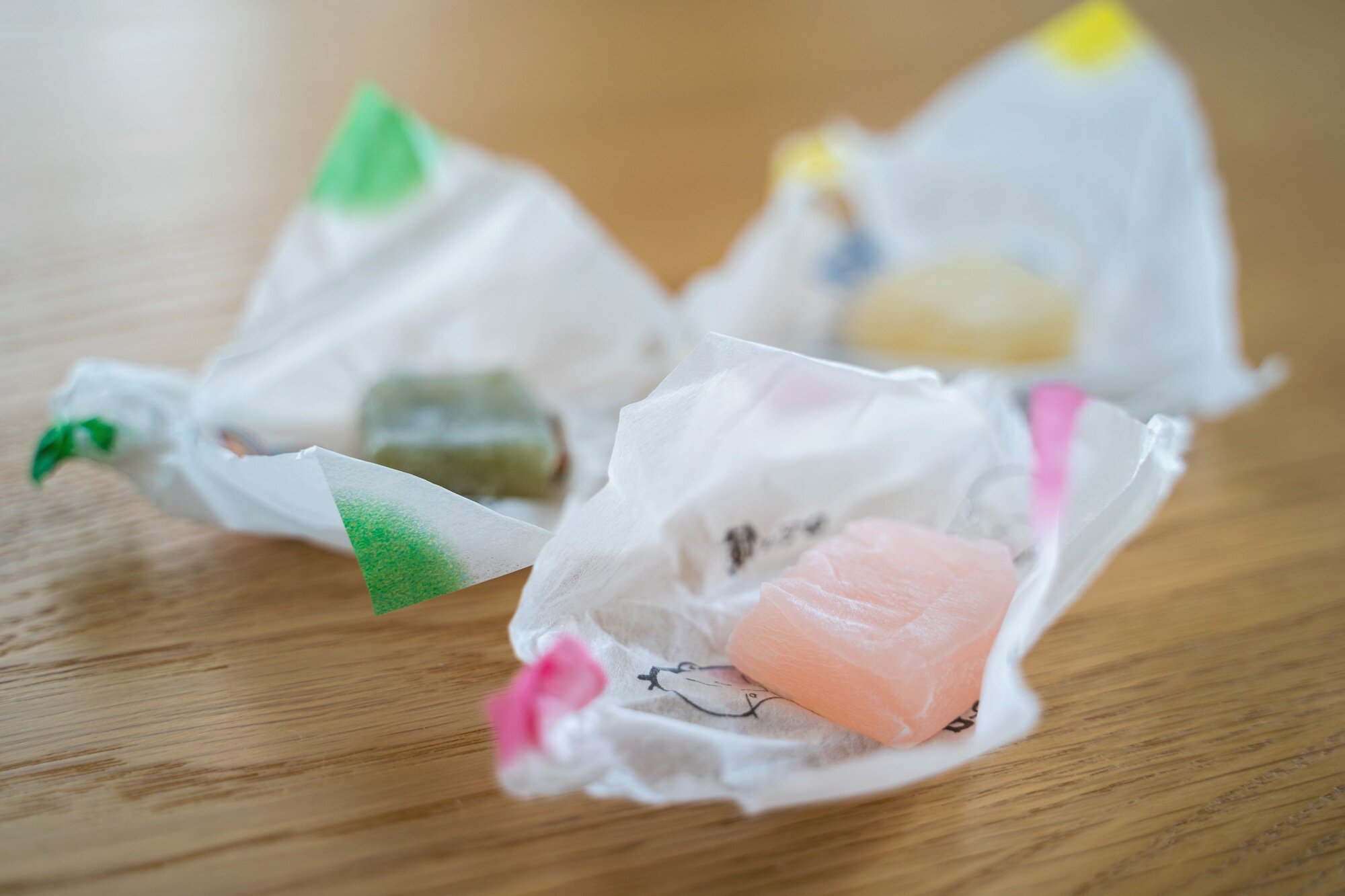


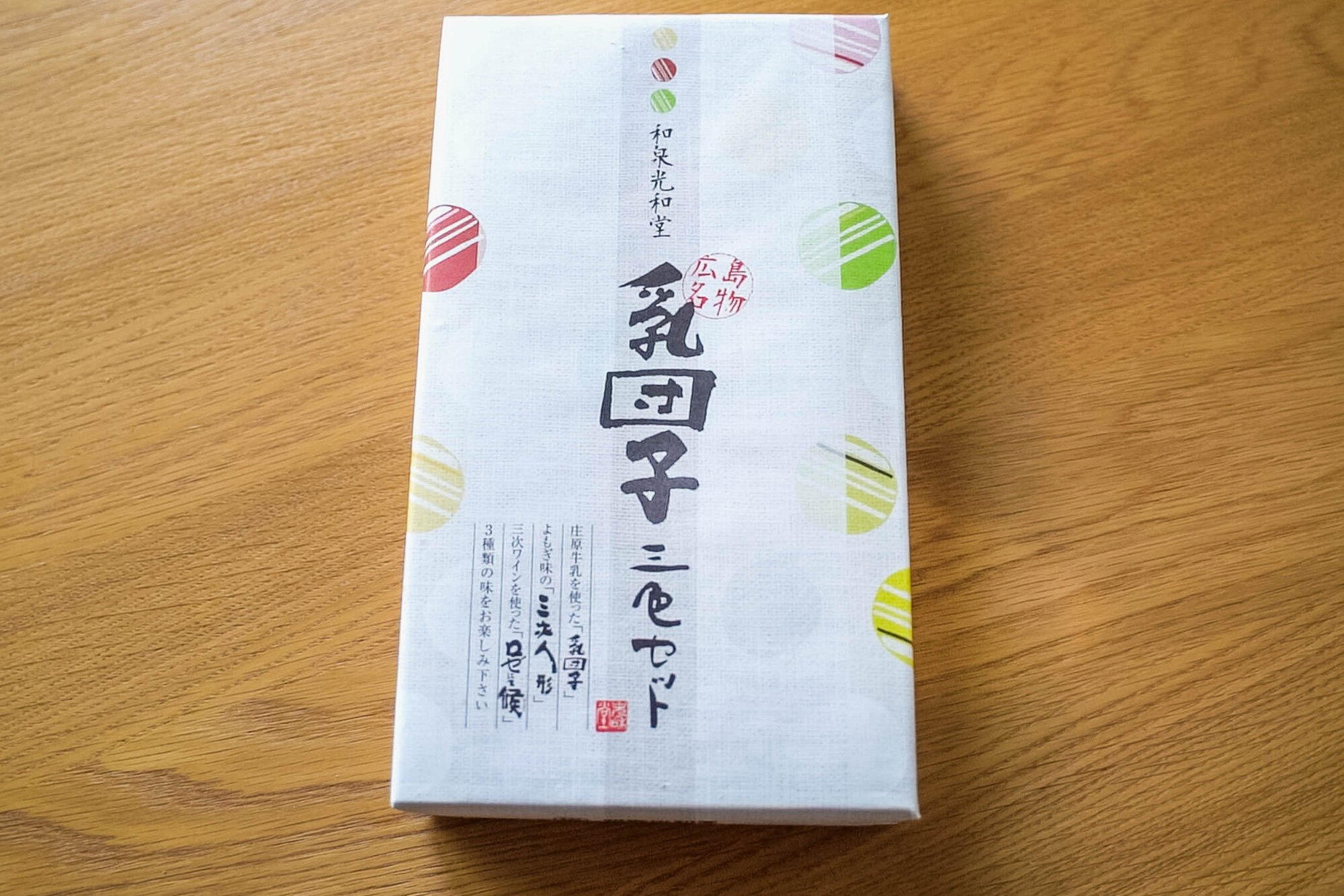
Chichi dango is one of the more well known Japanese snacks in Hawaii. It’s a soft, sticky mochi that’s often made with mochiko powder, coconut milk and so on.
The truth is, chichi dango is not well known in Japan.
Chichi dango originated in a small city called Shōbara-shi (庄原市) in Hiroshima prefecture. In 1900, a national dairy farm was established in the area and got big. The founder of Izumi Kouwadou, a nearby shop, wanted to make a nutritious snack with the milk, and that’s how his shop became the origin of chichi dango, selling it in 1934.
The ingredients differ from the common recipes found in Hawaii. They use no water or coconut milk. It’s simply mochiko powder in milk, sugar, glucose syrup and honey.
Food coloring also isn’t used for the pink and green colors. The pink is made from rosé wine from Miyoshi-shi, a city next to the Shōbara-shi area. The green is made from yomogi, a sagebrush.
While it may be known in the eastern parts of Hiroshima prefecture, it’s not known throughout Japan.
Found at: Online, shops in Hiroshima
http://chichidango.co.jp [J]
Price: ~ 810 JPY (15 pc.)
Habutae mochi
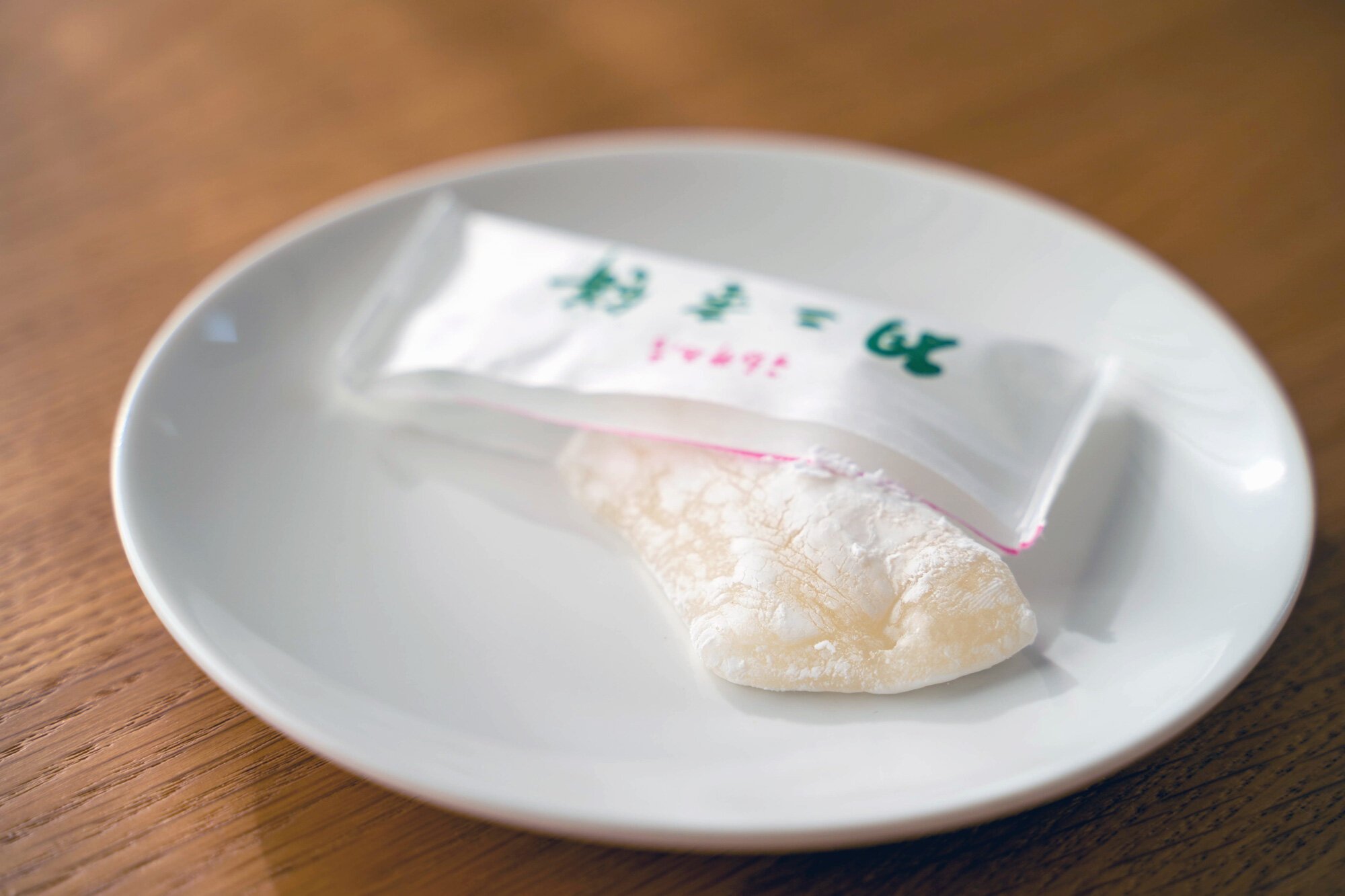
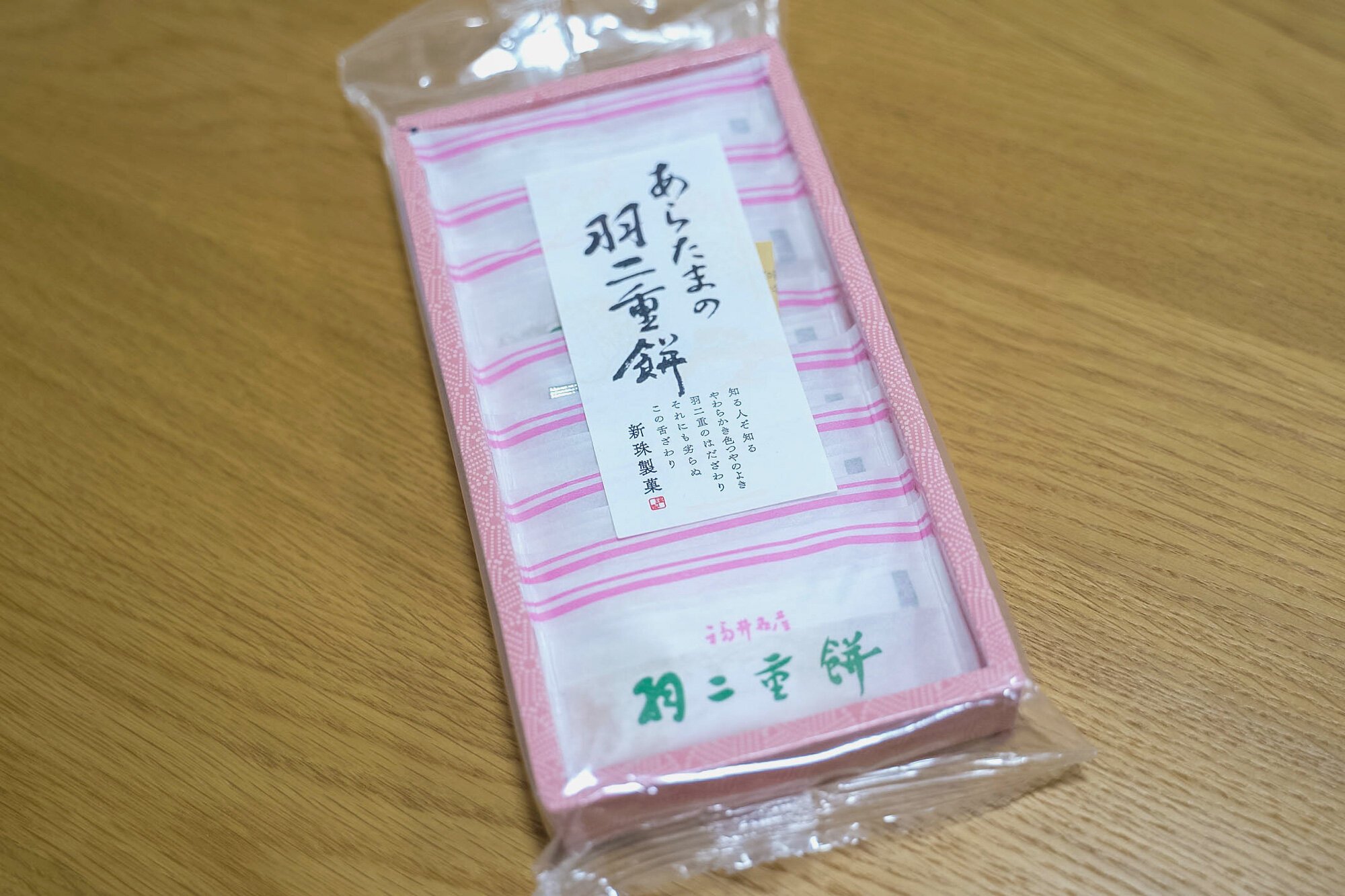
Habutae mochi is similar to chichi dango. The reason why I’m adding this in is because it’s more well known in Japan than chichi dango.
It’s made in many places in the country but originated in Fukui prefecture. It’s called “habutae” in reference to Japanese silk. Fukui prefecture is known for making a lot of textiles, including the silk, and the mochi has a texture that is smooth and silk-like.
Habutae mochi is made from steamed mochi powder, sugar and corn syrup. No milk.
It is very soft, and is somewhat similar to gyuhi, or the mochi-like topping that’s found in frozen yogurt parlors.
Found at: Department stores, supermarkets
Price: ~ 800 JPY (8 pcs)
Li hing mui
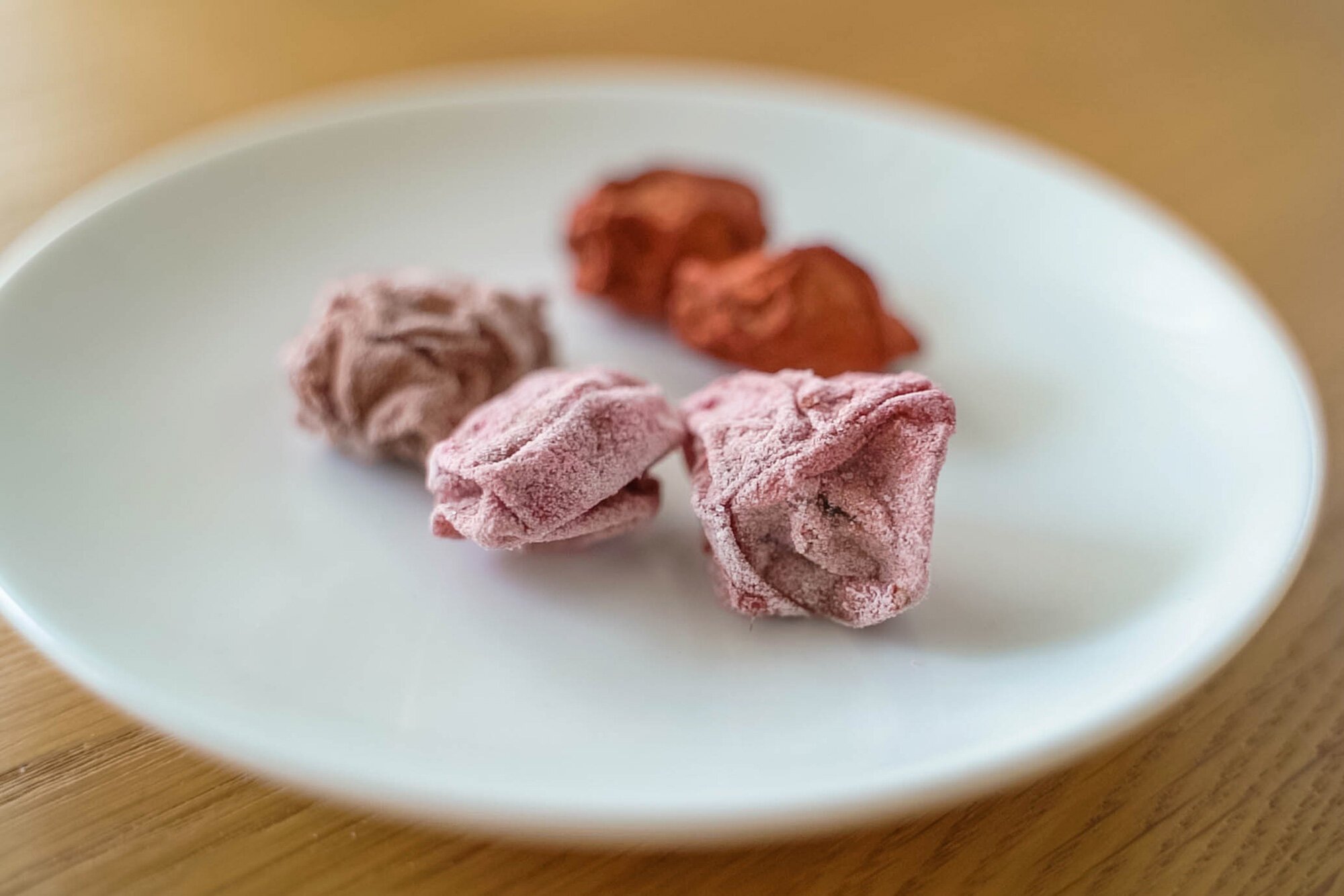
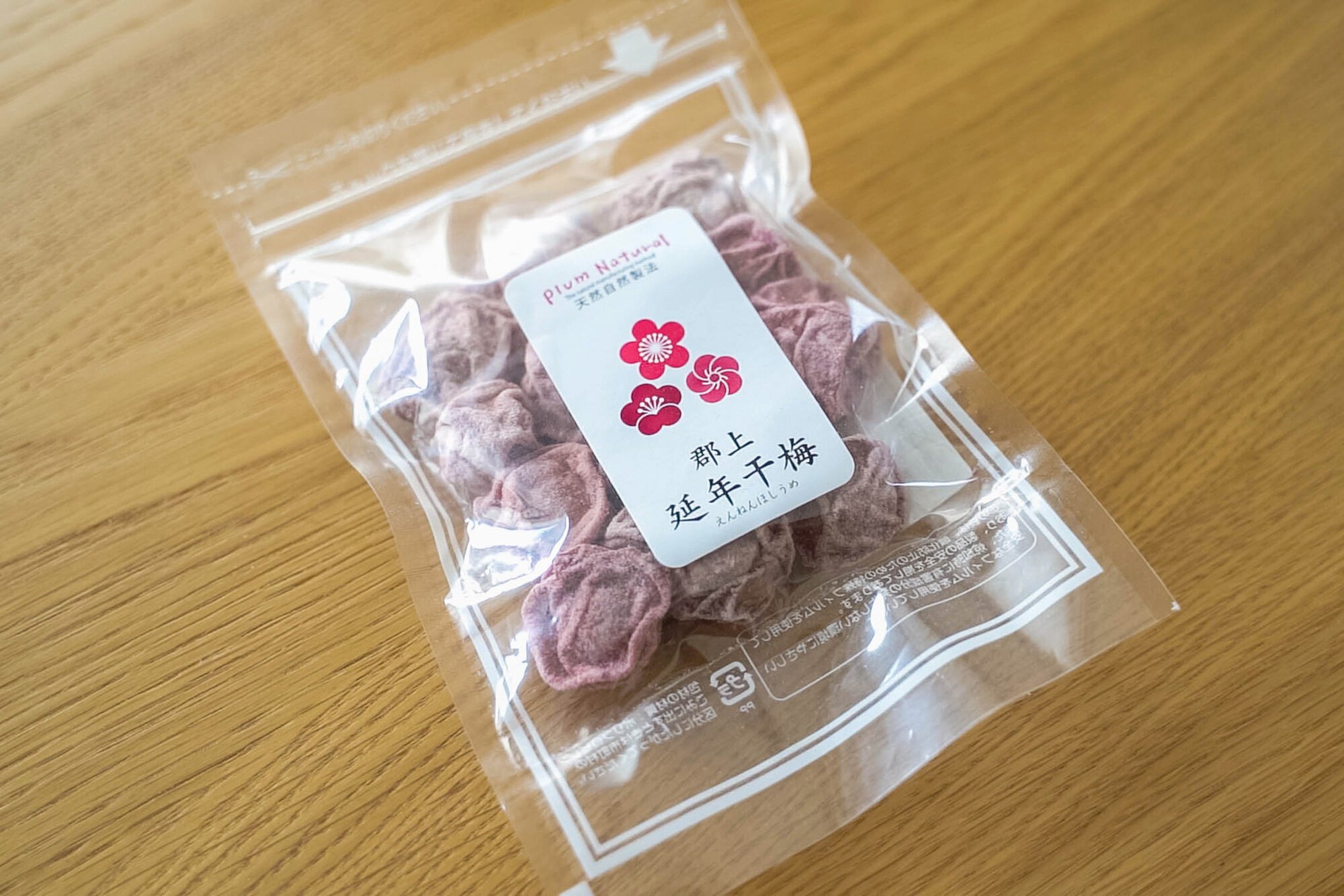
Li hing mui is not from Japan, but there is something similar. If you don’t know, li hing mui is dried plums that began being imported from China in the early 1900s.
Probably the most common snack condiment in Hawaii, li hing mui can be found everywhere. If not in seed form, it’s used as a powder or syrup on anything from gummies and Sour Patch Kids to apples and pineapples, popcorn and shave ice to margaritas and desserts.
It is an acquired taste, however, as it’s very salty.
In Japan, dried, salty plums are most common in Okinawa. These were from Gifu prefecture though, and they were a lot saltier. They also had a sakura-like flower, which is different from Hawaii’s, which are either red or grey.
Found at: Convenience stores, Japanese ingredient shops
Price: ~200-500 JPY (1 pkg)
http://www.plumnature.com [J]






I share my experiences and tips for dealing with money if you're traveling or moving to Japan. My preferred banks in the U.S and Japan, how to use Apple Pay, and the credit cards that I use.